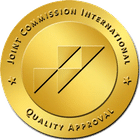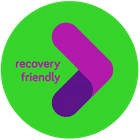Xanax abuse spiking in the U.S. is one of the hidden threats lurking beneath our country’s surface. It’s a reality many people are considerably affected by. However, due to substance misuse’s stigma, many never disclose their harrowing experiences with Xanax abuse. Additionally, with the much larger opioid crisis on our hands, coverage of Xanax abuse is often eclipsed by massive overdose rates involving fentanyl. It is not uncommon that these losses sometimes include benzodiazepines like Xanax.
This blog will explore the many facets of Xanax addiction and why it’s become a significant issue for many Americans. Additionally, we will discuss your options for treatment from this grueling experience. While anxiety can be difficult or even, at times, unbearable, there are options to manage symptoms that do not lead to chemical dependency or substance misuse.
For more information about us, GateHouse Treatment, and our approach to Xanax addiction and recovery, click here.
Fact 1: What Xanax Is and How It Works
Xanax is a prescription medication commonly used to treat Generalized Anxiety Disorder or Panic Disorder. Xanax is in the family of drugs known as benzodiazepines, which include other medications like Ativan, Klonopin, and Valium. While these drugs can effectively manage anxiety, many addiction specialists consider them highly addictive and dangerous due to their unique psychodynamic profile. The attractiveness is particularly true for Xanax because it is fast-acting and can present sensations of pleasure and release.
Xanax, like all benzos, is a tranquilizer. Benzodiazepines are also called sedatives or anxiolytics. They work on brain chemistry, explicitly enhancing the neurotransmitter called GABA. The GABA neurotransmitter is like the brain’s chief traffic officer; it slows everything down and reduces communication from one brain cell to another. This relaxation ensures the individual consuming the drug no longer feels overstimulated and calms the fight or flight experience.
Since GABA has a calming effect on the body, lower levels of GABA are often associated with mood disorders. Taking medications like Xanax extinguishes feelings of excessive fear, anxiety, and overwhelm. These are the key symptoms people prescribed Xanax typically experience.
Xanax typically sedates, induces sleep, and relaxes the muscles. Because of these relaxing effects, doctors prescribe medication for anxiety, insomnia, and epilepsy. In some cases, doctors may also prescribe Xanax for alcohol withdrawal.
Without GABA, the brain can create too many tasks and messages, and much like in a too-busy intersection during traffic, sometimes accidents happen. Being low in GABA is associated with seizures, a surge of electrical activity in your brain that GABA typically slows.
Fact 2: Xanax Abuse is Real and Happens for a Reason
Social interactions can produce increases in anxiety and awkwardness. Sometimes people turn to pharmaceuticals like Xanax to cope with this experience. Alcohol is often regarded as the country’s standard social lubricant because it lowers inhibitions. Interestingly, Xanax fills a similar void.
When users begin taking Xanax, they report minimizing all sensations of anxiety and negative emotions. Individuals often describe the feeling of being on Xanax as the removal of an existential weight. This new freedom allows users to access their “authentic” selves, unfiltered and held back by massive insecurities or anxiety.
In the case of Xanax abuse, which can become recreational, chronic use dampens the effects. Quickly the brain builds a tolerance to the drug and requires more to achieve the original impact. Larger doses often lead to more frequent use, marking the beginning of chemical dependency.
Because of the considerable effects Xanax has on the brain, it’s not surprising that the medication is highly addictive. Without it, users often feel irritable, antisocial, and jittery. When Xanax abuse begins to get severe, individuals often lose control and engage in high-risk behaviors to acquire more. Sometimes, out of desperation, users may experiment with other drugs to avoid withdrawal or the return of anxiety symptoms.
Fact 3: Xanax Abuse is on the Rise
Not surprisingly, recent research recorded a significant uptick in benzodiazepine abuse around the beginning of the COVID-19 pandemic. This increase in abuse likely results from the prevalence of anxiety surrounding the pandemic and a focus on mental wellness. Yet, even with the dangers involved in the consumption of Xanax, including an increased addiction potential, it remains one of the most prescribed drugs in the United States.
In the last year, Xanax has received more attention, with the documentary on Netflix titled “Take Your Pills: Xanax,” which examines the dangers and history of the drug. However, even with the onslaught of new resources and features about the dangers of Xanax, many providers continue to prescribe it long-term.
Misuse liability represents the degree to which the psychoactive properties of a drug may foster misuse or chemical dependence. This potential for abuse makes it exceptionally important that a medical doctor administer and oversee benzodiazepine usage. When consumed outside a clinical setting, Xanax can become incredibly dangerous.
Fact 4: Signs of Xanax Abuse
Since the dangers of Xanax abuse are serious, it’s crucial to recognize the signs of abuse. Additionally, it’s essential to understand why abuse is so common.
Xanax is most typically taken orally in pill form. The behavior observed during Xanax abuse may include the following:
- Impaired judgment and reduced inhibition
- Drowsiness and lightheadedness
- Blurred vision
- Muscle weakness
- Difficulty operating motor vehicles or machinery
- Doctor shopping
- Sudden mood changes
- Hostility and aggression
- Social withdrawal and isolation
- Weight gain
- Confusion, memory loss, and fogginess
- Uncontrollable laughter
- Crushing, snorting, or smoking pills
- Risky behavior and criminal activity
Due to increased tolerance, a Xanax addiction becomes harder to maintain. When the habit worsens, users may combine Xanax with other substances to enhance the effects. Mixing substances is when the dangers of Xanax become extreme.
Both alcohol and benzodiazepines are depressants and have similar effects on the central nervous system, meaning one amplifies the other. The most common side effect of mixing is loss of consciousness or “blacking out.” Death is the most severe consequence of this oversedation, commonly called an overdose. During a fatal drug overdose, the respiratory system and cardiac functions slow to a crawl.
Warning Signs of an Overdose:
- Extremely slurred speech or loss of speech functions
- Passing out
- Significant confusion
- Labored breathing
- Acute loss of motor control
- Quick sideways eye movement (called nystagmus)
- Low blood pressure
Contact a medical professional immediately if you experience these symptoms or notice the signs in a loved one. This vital choice can be the difference between life and death.
Fact 5: Xanax Abuse Withdrawal Symptoms
Since consuming Xanax is habit-forming, users typically experience withdrawals when stopping or tapering off. Withdrawal from Xanax abuse typically starts quickly and peaks 10-14 days after stopping use. In some cases, the effects of withdrawal may continue for months. Symptoms of Xanax abuse withdrawal include:
- Difficulty sleeping
- Irritability
- Muscle tremors
- Sweating
- Muscle pain
- Palpitations
- Difficulty concentrating
- Nausea
- Panic
- Suicidal Ideation (in select cases)
Fact 6: Xanax Abuse Treatment and Recovery
There is a variety of Xanax addiction treatments available, including Cognitive Behavioral Therapy(CBT) and treatment centers like GateHouse Treatment. Cognitive Behavioral Therapy redefines negative thinking and teaches healthier coping mechanisms that help with anxiety. CBT can help those recovering from Xanax abuse establish goals, identify problems, gain clarity, and learn problem-solving skills that make navigating life easier.
You must find a personalized approach to managing your anxiety and recovering from Xanax abuse. In some cases, combining treatment methods improve recovery odds.
Fact 7: Xanax Remains One of the World’s Most Prescribed Psychiatric Drugs
First discovered in 1955, benzodiazepines hit the American mainstream in the 60s as Valium, or “the little yellow pill.” However, they quickly became a problem, as doctors prescribed them heavily. Valium was marketed as a wonder drug, ridding individuals of petty anxieties and offering an opportunity for a stress-free life.
Sales ballooned to over 1 million as they were freely prescribed, particularly to women and stay-at-home moms. This era produced the conception of a pill-popping housewife stereotype, which inspired the Rolling Stones’ hit song “Mother’s Little Helper.”
In 1981 Xanax was approved by the United States Food and Drug Administration (FDA) for treating anxiety. Since then, Xanax has become one of the most widely prescribed psychiatric drugs. While Xanax can effectively treat anxiety, it also has a high potential for abuse and addiction.
New regulations on controlled substances like Xanax have helped the U.S. better regulate the drugs and caused doctors to consider prescribing them. However, the recent global escalation of anxiety and depression has allowed Xanax abuse to continue.
GateHouse Treatment and Xanax Abuse
At GateHouse Treatment, we understand our clients are so much more than their symptoms and the debilitating addictions they may be living with. Our team of highly trained and compassionate addiction experts provides the care clients need to recover in a way that leads to long-term sobriety.
We understand that dependency and Xanax abuse is not moral or character defect. GateHouse Treatment works hard to offer the care options you need to attain sobriety. We have options like sober homes, partial hospitalization, or more comprehensive care like outpatient care and medication-assisted therapy. Additionally, we offer our clients holistic options, which address many core issues that lead to anxiety and Xanax abuse.
If you or a loved one is struggling with Xanax or benzodiazepine, take the first step and call (855) 448-3588 or contact us here. We offer 24/7 service and are always ready to help, no matter your circumstances.
- Cymbalta Withdrawal: Causes, Symptoms, And Management - October 12, 2023
- Boredom in Recovery: 5 Tips to Avoid Relapse - October 6, 2023
- Overconfidence and Rehab: Avoiding Relapse - October 4, 2023




